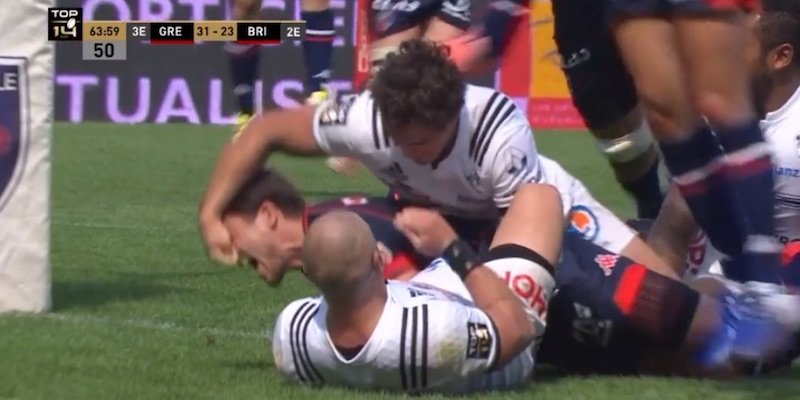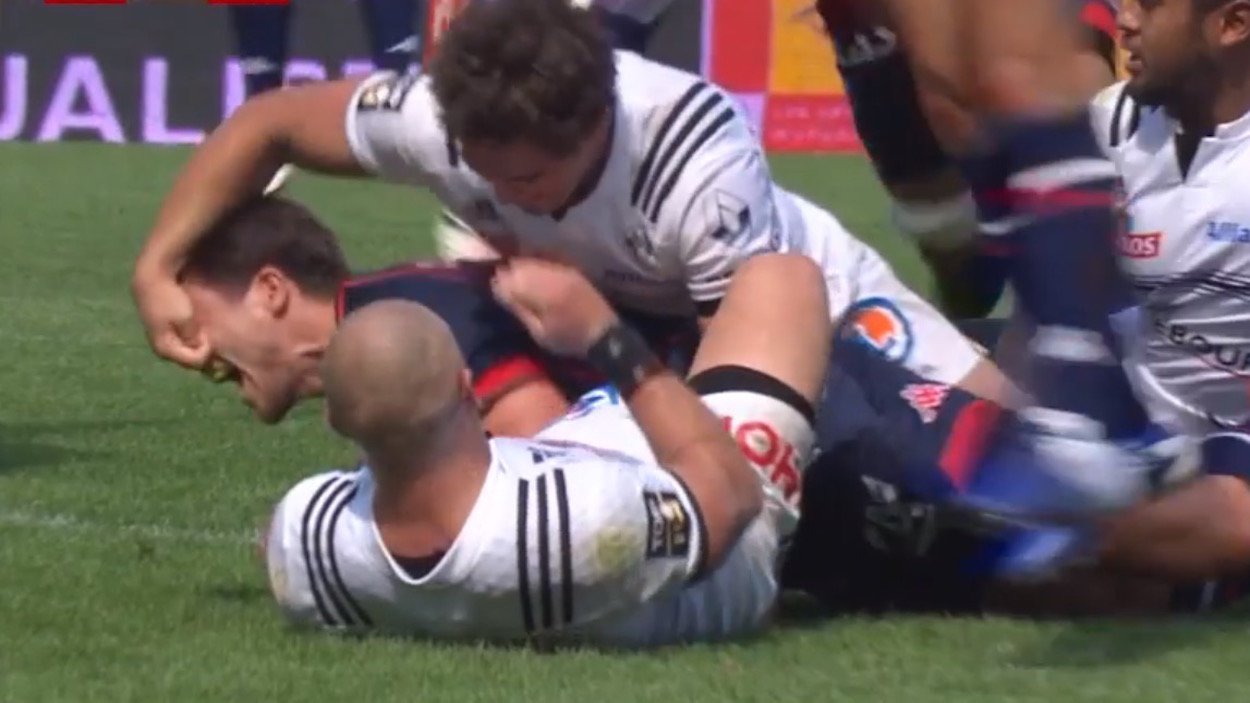Brive’s Matthieu Ugalde is likely to be in a spot of bother for ‘making contact with the eyes or the eye area of an opponent’ last weekend, but the length of his ban – if he is banned at all – is anyone’s guess. James Harrington asks why such incidents are punished so inconsistently.
You probably remember Owen Franks’ alleged eye gouge on Kane Douglas in the Bledisloe Cup match in Wellington earlier this year.
It caused a furore at the time, especially when SANZAAR failed to cite Franks for the incident and World Rugby said it could do nothing about decision.
It’s true. They can’t. Disciplinary matters are the responsibility of tournament organisers.
Even the support of the alleged gougee, who generously said that he didn’t think the incident was worthy of the attention it received, did little to dampen the anger of the social media rugby collective.
Now, there’s this, from Saturday’s pitch battle between Grenoble and Brive in France’s Top 14.
Watch: Grenoble vs Brive Full Game | Condensed
It’s fair to say Brive’s Matthieu Ugalde is likely to be in a spot of bother. The video evidence appears damning, and Grenoble players clearly noticed it at the time, even if referee Sebastien Minery did not. No cards were flourished for this particular incident in a match which saw three reds and three yellows drawn from Minery’s pocket.
By the time of the alleged gouging, the game had already boiled over. At the end of the first half, Grenoble’s Sona Taumalolo and Nigel Hunt, and the visitors’ Damien Jourdain, were sent off for their part in a violent brawl.
And two of the three yellows were brandished in a penalty heavy final 10 minutes.
The good news, at least, is try-scorer Armand Batlle was able to continue. But that’s beside the point. The fact is rugby authorities have an eye-gouging problem that they have been unable to deal with for decades.
The maximum ban for ‘making contact with the eyes or the eye area of an opponent’, as the laws of the game rather tamely describe it, is three years.
The minimum is 12 weeks.
To date, only Colomiers’ Richard Nones has been handed anything close to a maximum sanction. He was banned for 104 weeks, or two years, for gouging Pontypridd’s Sven Cronk during a European Cup match in 1999.
The problem is that there is little consistency across the game. Individual cases are the purview of tournament organisers. SANZAAR decided not to cite Owen Franks.
[rugbypass-ad-banner id=”1473723660″]
Most bans are at the lower end of the scale. World Rugby itself banned Argentina lock Mariano Galarza for gouging Brodie Retallick during last year’s World Cup – a tournament it organises – for 13 weeks, with a four-week reduction for previous good behaviour.
Nones was banned by authorities responsible for the former Heineken Cup. In fact, the old European competition has a history of tough sanctions. Stade Francais’ prop David Attoub was slapped with a 70-week ban for gouging Ulster’s Stephen Ferris during a stormy Heineken Cup game in December 2009.
It was, presiding officer Jeff Blackett said at the time, “the worst act of contact with the eyes that I have had to deal with.”
The Paris side’s scrum-half Julien Dupuy also copped a 24-week ban, reduced to 23 on appeal, for gouging Ferris moments earlier.
But it’s not up to European authorities to rule on the incident during the Grenoble vs Brive game. It’s up to France’s Ligue National de Rugby, who run the Top 14. Whatever they decide, World Rugby’s hands are tied.
Fortunately, World Rugby’s charismatic vice-chairman Agustin Pichot has at least recognised that there is a problem. All he has to do is work out a way to do something about it. Maybe taking a leaf from the former European competition is the first step.















































































